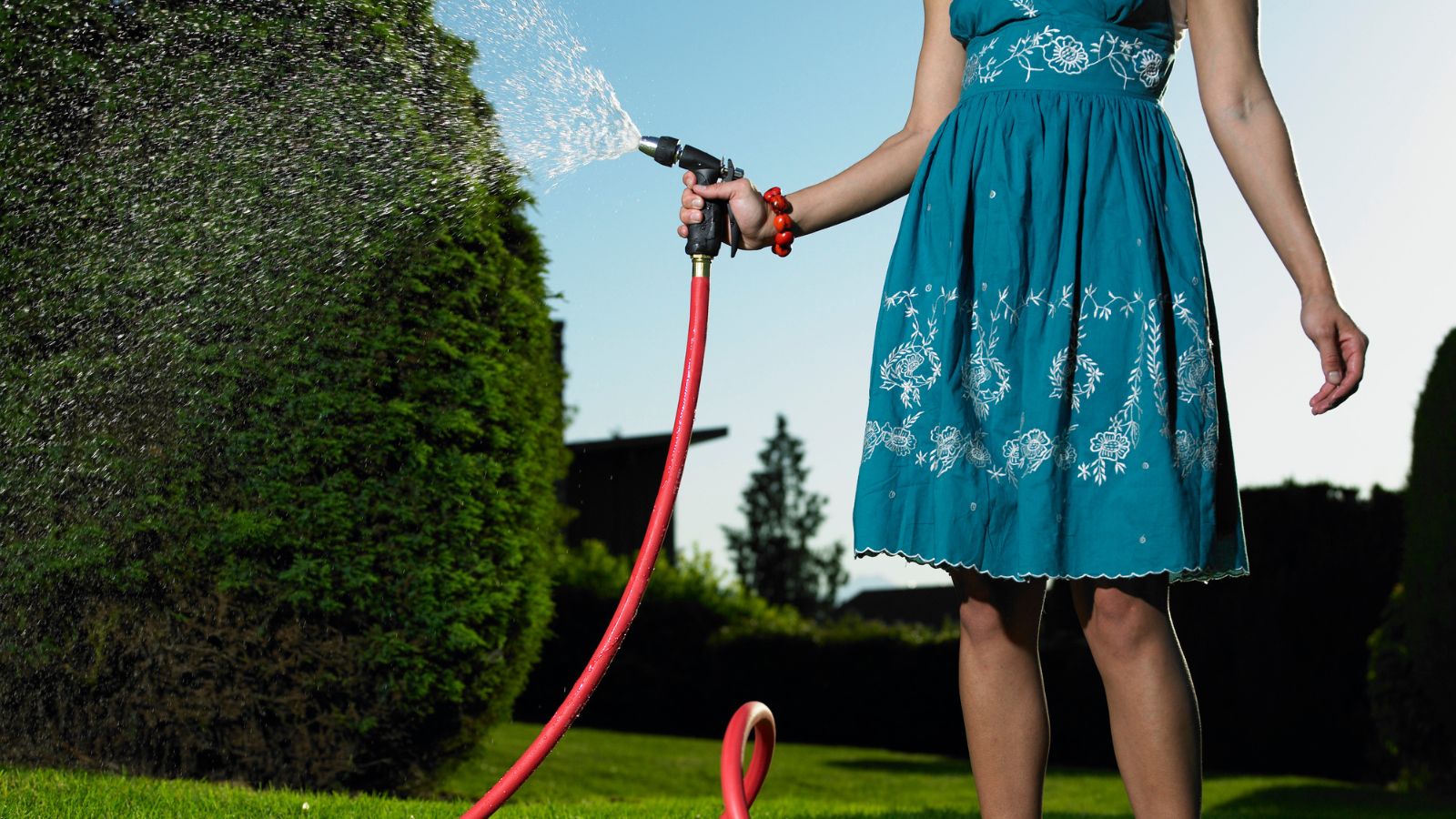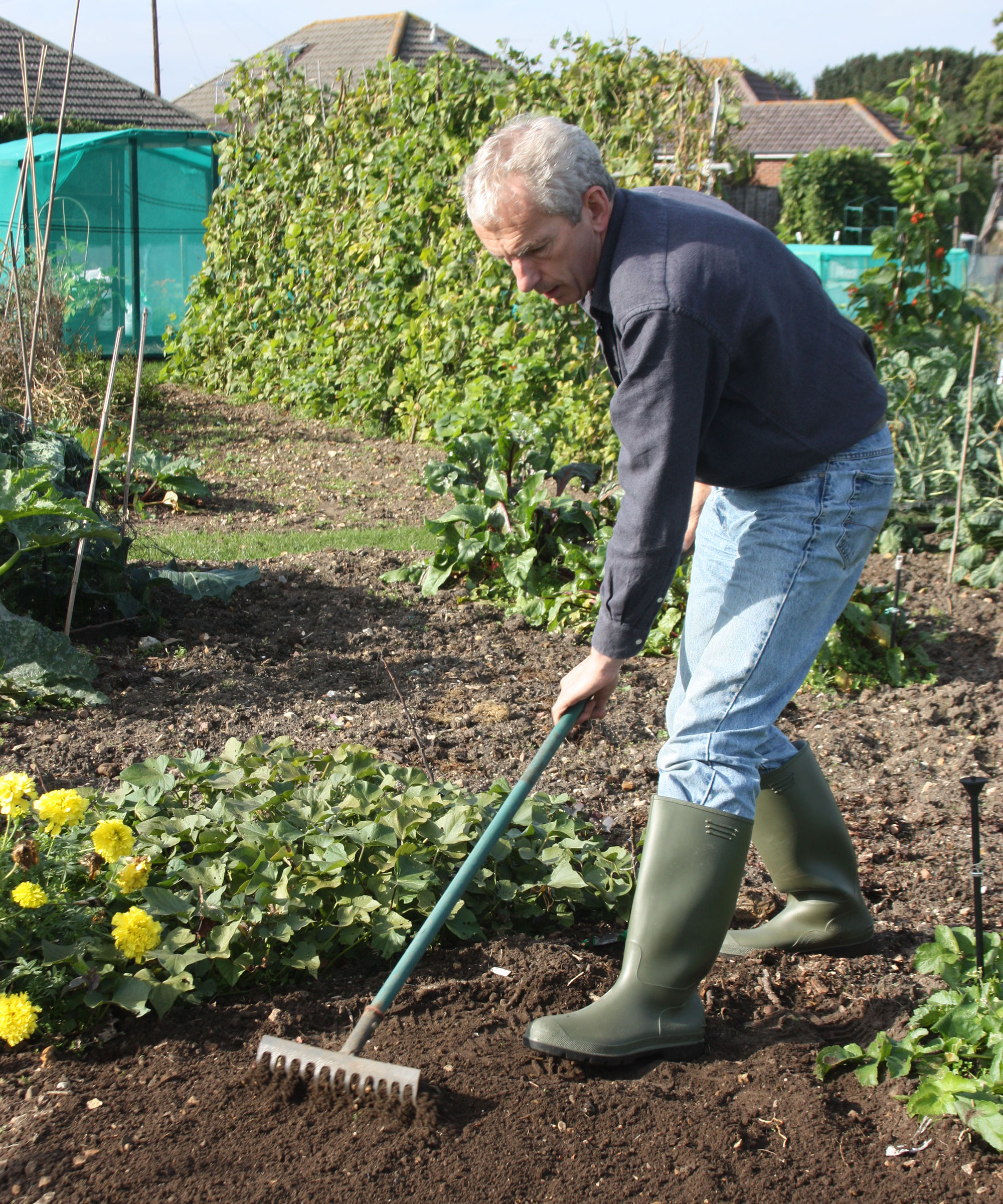Lawn watering mistakes – 9 errors garden experts want us to stop making, and what to do instead
It's much easier to get right when you know what not to do


As the weather warms up, we begin to consider watering our lawns again. But did you know that there are many common lawn watering mistakes we're all making that could be causing just as much, if not more, damage than not watering at all?
We spoke to our own team of garden experts, plus a host of lawn care and property renovation advisors to discover the lawn care mistakes that regularly happen when we're watering grass.
Cut these out of your routine and you'll be rewarded with a lawn that's much more likely to be green, lush and weed-free.
1. Over-watering
'Most people worry about their lawns being underwatered and dying as a result, but lots of damage can be caused by over-zealous homeowners overwatering their lawn,' warns H&G's gardening expert Drew Swainston.
'Not only will it cause the lawn to become wet and muddy, but it actually encourages the grass to grow only a shallow root system that leaves it more susceptible during periods of heat. Excessive watering also washes nutrients and goodness out of the soil and can lead it to be starved and show dying patches.'
'Overwatering can lead to shallow roots. These are more susceptible to damage from drought, disease, and pests,' warns Miguel Camperos, VP of Operations at ethical gardening firm SunVara.
Instead, you should follow a watering schedule that is appropriate for your climate and the type of grass you have. In general, most lawns require about 1 inch of water per week.
Design expertise in your inbox – from inspiring decorating ideas and beautiful celebrity homes to practical gardening advice and shopping round-ups.
'Allow the soil to dry before watering again to promote vigorous root growth,' advises lawncare expert Reese Robbins from Just Pure Gardening.
Over-watering new lawns is going to be a problem, too. 'Keep them damp but not over-watered as this can cause shallow rooting,' warns H&G's gardening expert Ruth Hayes.
'Overwatering can also lead to increased water usage and costs for you, which means higher water bills,' says Miguel Camperos. 'For those who live in areas where droughts are common, it also puts unnecessary strain on local water resources.'

Drew qualified as a journalist before studying for a horticulture qualification, after which he worked as a professional gardener for several years, specializing in kitchen gardening. He's now bringing his expertise and passion to Homes & Gardens as a member of our team.

Ruth is horticulturally trained and has qualifications from the Royal Horticultural Society. She spends her days writing about and photographing key gardening jobs, and always enjoys sowing a wide range of flower seeds in her own garden.
2. Underwatering
'Not giving your grass enough water is an obvious lawn watering mistake,' says Reese Robbins. 'Underwatering your lawn can cause it to dry out and become weak, so check your lawn's moisture level regularly to ensure it's getting enough water.'
3. Not allowing your lawn to dry out
Eric DeBoer, agronomist with Simple Lawn Solutions, delves deeper into the over- and underwatering debate.
'Watering deeply and infrequently has many more advantages compared to light, frequent watering,' he says. 'Light, frequent watering does three negative things for lawn health. One, it can keep the upper portion of the root zone moist for long periods of time. This makes the environment very suitable for fungal growth, as well as weed seed germination.
'Allowing the soil to dry between watering helps reduce that pressure.
'Two, it encourages shallowing rooting as the grass roots aren't forced to grow deeper into the soil in search of water. Three, if the upper portion of the root zone remains saturated for long periods of time, the water in the soils' pores can block the diffusion of oxygen into the soil. If all the oxygen in the soil gets consumed, there is no oxygen around for the roots to respire. If this goes on for too long, it can lead to plant death. Aim to water about 1 to 1.5in per week using no more than three watering days per week.'
4. Watering when it's sunny
'Watering when it's sunny is a mistake many gardeners make, particularly in a heatwave,' says H&G's garden expert Drew Swainston.
'It is always best to water the lawn early in the morning as this gives the grass the chance to take in as much of the water as possible. Watering during the warmest parts of the day will see more moisture lost to evaporation thanks to the sun than the plants are able to take advantage of. The moisture will evaporate away before it reaches the roots – where the plants really need it – and leave the lawn starved of much-needed water.'
'The optimal time to water your lawn is between 5am and 10am to prevent evaporation due to sunlight,' advises lawncare expert Reese Robbins from Just Pure Gardening.
5. Watering at night
'Watering at night removes the problem of evaporation, however it can open up the door to other potential problems,' continues Drew Swainston.
'It means the grass will sit wet for longer and be damp overnight, which can lead to an increased risk of fungal diseases spreading as they thrive in wet foliage and humid weather.'
6. Watering when it's windy
It's all about optimal absorption, according to Dan Bailey, President, WikiLawn Tampa Lawn Care: 'One of the most common lawn watering mistakes is watering when winds are too high for adequate absorption. It's really best to plan on watering first thing in the morning or later in the afternoon or evening when it's not windy so your grass has a chance to absorb water before it evaporates.'
7. Watering with the wrong sprinkler system
'Sprinkler hoses that shoot out a fine spray of water every few inches along their length have become very popular in households with young children and watering the lawn can become fun for the kids,' advises gardening expert Tim Rumball.
'However, sprinkler hoses encourage water to evaporate so a lot is wasted. They work best as watering devices used in the cooler early morning or late evening, and can also be used through flower and veg beds, but they take longer to soak the soil and use more water than drip or seep hoses.
'Rotating sprinklers are the best way to water a lawn, giving even coverage. The water jets are heavier than from sprinkler hoses, so evaporation is less of an issue.
'However, you need to run them for quite a long time to get water deep into the soil across the whole lawn, so they’re expensive. Buy one with a powerful enough water spray to suit the size of your lawn – otherwise, you’ll spend a lot of time moving it around.'

Tim Rumball was editor of Amateur Gardening magazine in the UK for 20 years. He is a keen grower of edibles and wrote a popular series called Grow, Cook and Eat. He is also known for his practical no-nonsense approach to gardening.
8. Watering with hard water
'Hard water contains high levels of minerals such as calcium and magnesium, which can build up in the soil over time and cause problems with drainage and nutrient uptake,' says Miguel Palma, professional gardener and owner of JardinTienda. 'If your tap water is hard, consider using a water softener or collecting rainwater for your lawn.'
The AquaSure Harmony system (at Amazon) is highly rated; and, as Miguel advises, rainwater harvesting is both a great solution and eco-friendly: Walmart sells a wide range of rainwater harvesting barrels.
9. Relying on your home plumbing system
Logan Cox, Assistant General Manager at John The Plumber Etobicoke, is worried about a whole different lawn watering mistake: creating a lawn watering routine that relies on your home's plumbing system.
'By connecting multiple hoses and sprinklers to your indoor faucets, you're putting unnecessary strain on your pipes and risking leaks or even worse, a burst pipe,' Logan warns. 'It's far better to invest in a dedicated irrigation system that can be adjusted according to your lawn's needs.'
FAQs
What does grass look like if it's overwatered?
Signs that you've overwatered your lawn include patches in grass that are dying. You may also notice that weeds become more abundant, and you'll suddenly find yourself having to get rid of mushrooms in your lawn or get rid of crabgrass. You should be able to see overwatering in front of your eyes: if the water doesn't run off but sits in pools for long periods after watering, it's likely that you've overwatered and/or need to aerate your lawn to relieve compaction or poor run-off.
How long should I run a sprinkler for?
You shouldn't need to run a sprinkler for more than half an hour. That done, turn it off and allow the water to soak into the soil; if the water runs away very quickly, you can repeat the watering when the soil is dry again. Don't, however, be tempted to overwater, which can be as damaging as underwatering and is a common garden watering mistake.
If you have made some of the lawn watering mistakes above and damaged your lawn, there are ways to rescue it; lawns are, after all, incredibly tough. Tony O'Neill, a gardening educator and author of Composting Masterclass and Your First Vegetable Garden, who runs Simplify Gardening says:
'To reverse damage caused by improper watering practices, implement a proper watering schedule based on your lawn's specific needs and local climate conditions. Aerate your lawn to improve soil compaction and increase water penetration and consider overseeding any bare or thin patches to encourage new growth. With time and proper care, your lawn should recover and flourish.'
Knowing when to stop watering a lawn in fall is a vital step to take once summer is over, too.

Lucy Searle has written about interiors, property and gardens since 1990, working her way around the interiors departments of women's magazines before switching to interiors-only titles in the mid-nineties. She was Associate Editor on Ideal Home, and Launch Editor of 4Homes magazine, before moving into digital in 2007, launching Channel 4's flagship website, Channel4.com/4homes. In 2018, Lucy took on the role of Global Editor in Chief for Realhomes.com, taking the site from a small magazine add-on to a global success. She was asked to repeat that success at Homes & Gardens, where she has also taken on the editorship of the magazine.